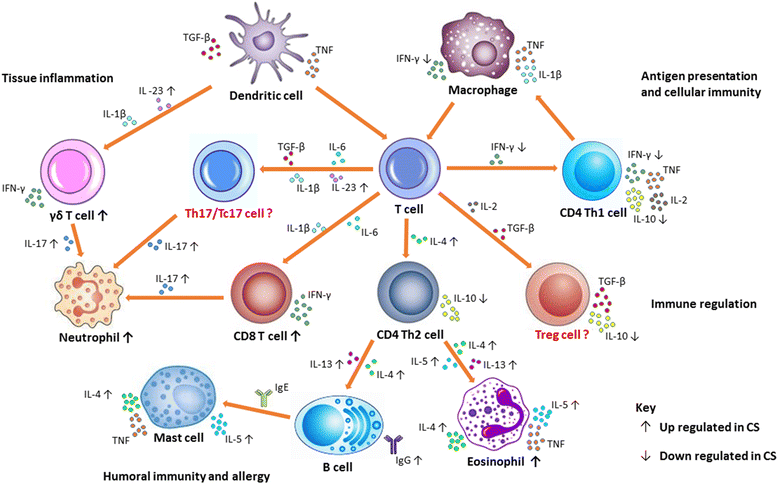Host immune responses to the itch mite, Sarcoptes scabiei, in humans
- PMID: 28797273
- PMCID: PMC5553898
- DOI: 10.1186/s13071-017-2320-4
Host immune responses to the itch mite, Sarcoptes scabiei, in humans
Abstract
Scabies is a parasitic disease due to infestation of skin by the burrowing mite Sarcoptes scabiei. Scabies is a major public health problem and endemic in resource poor communities worldwide affecting over 100 million people. Associated bacterial infections cause substantial morbidity, and in severe cases can lead to renal and cardiac diseases. Mite infestation of the skin causes localised cutaneous inflammation, pruritus, skin lesions, and allergic and inflammatory responses are mounted by the host against the mite and its products. Our current understanding of the immune and inflammatory responses associated with the clinical manifestations in scabies is far outweighed by the significant global impact of the disease. This review aims to provide a better understanding of human immune responses to S. scabiei in ordinary and crusted scabies phenotypes.
Keywords: Crusted scabies; Cytokines; Immune responses; Sarcoptes scabiei; Scabies.
Conflict of interest statement
Ethics approval and consent to participate
Not applicable.
Consent for publication
Not applicable.
Competing interests
The authors declare that they have no competing interests.
Publisher’s Note
Springer Nature remains neutral with regard to jurisdictional claims in published maps and institutional affiliations.
Figures

References
-
- Murray CJ, Vos T, Lozano R, Naghavi M, Flaxman AD, Michaud C, et al. Disability-adjusted life years (DALYs) for 291 diseases and injuries in 21 regions, 1990–2010: a systematic analysis for the global burden of disease study 2010. Lancet. 2012;380(9859):2197–2223. doi: 10.1016/S0140-6736(12)61689-4. - DOI - PubMed
Publication types
MeSH terms
Substances
LinkOut - more resources
Full Text Sources
Other Literature Sources
Medical
Research Materials

